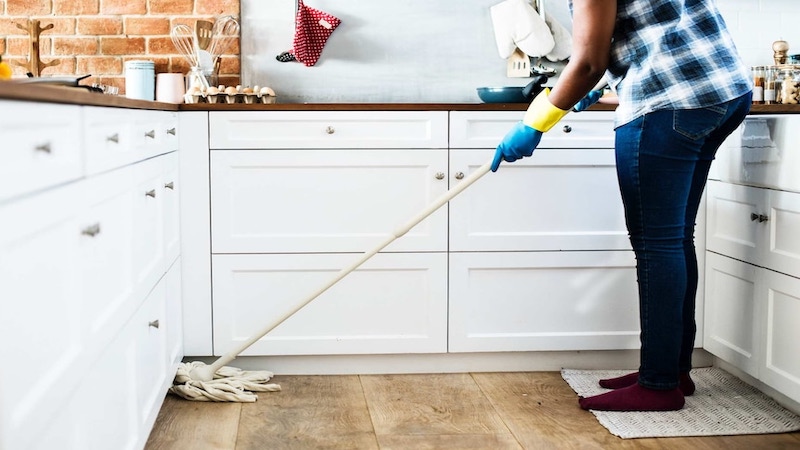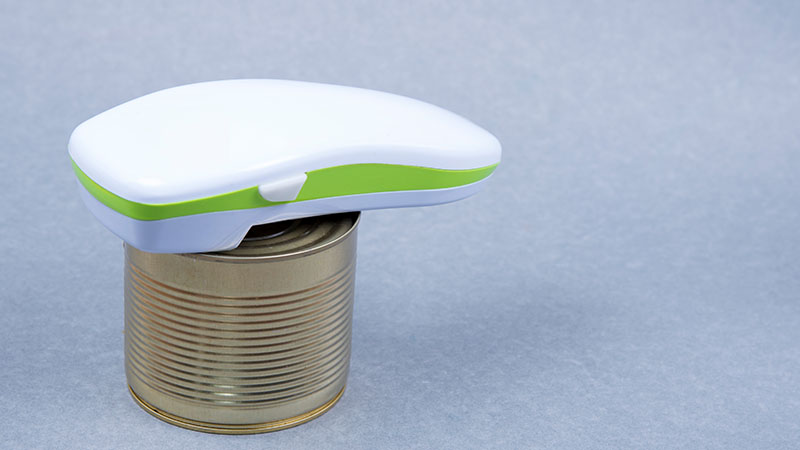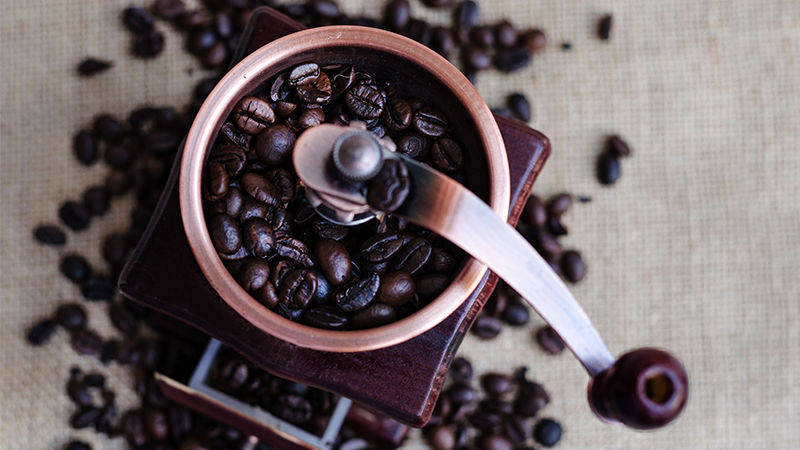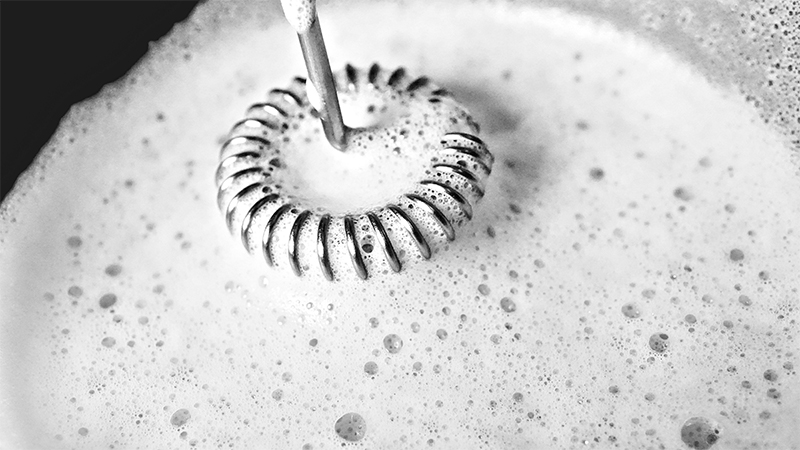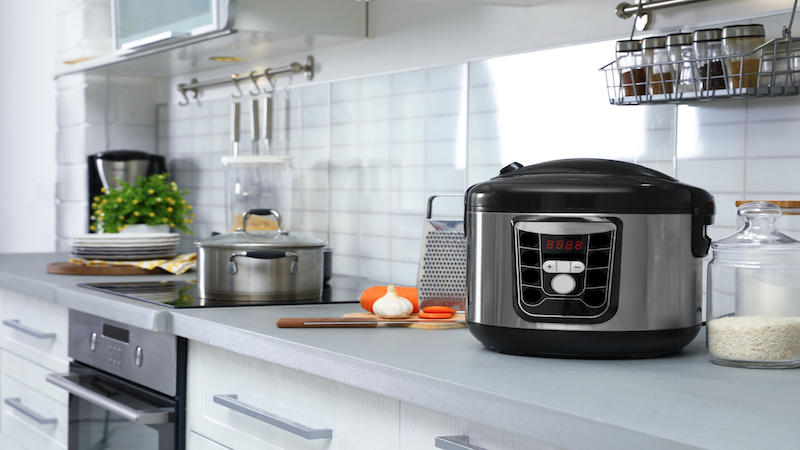Best Induction Pan

Induction hobs have become very popular due to their rapid heating and responsive controls.
However, to cook on induction hobs, you will need pans that are compatible. Unlike gas, electric and ceramic hobs, which allow you to use almost any type of pan, an induction hob demands specialist induction pan sets.
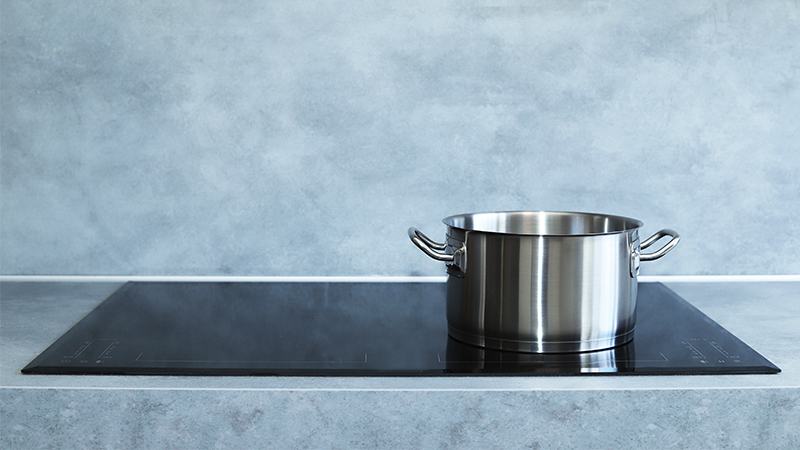
This means that induction pans must be magnetic so that the hob can create a fluctuating magnetic field with the base to heat the food. It is possible to check if a pan is suitable for an induction hob by holding a magnet near the base. If the magnet sticks to the pan, then it can be used on an induction hob.
This article will give you all the information that you need to choose the best induction pans.
We will look at the different types of induction pan that you can use and how they work with an induction hob. It will look at different types of induction pans, including frying pans and griddle pans, as well as saucepans.
If you have recently invested in a new induction hob, then you may need to buy new induction pans, you may be renting a property that has an induction hob, or you may want to buy a new induction hob pan set as a gift for someone. Whatever your reason, you will want to buy the best induction pans that your budget allows, and this article will help you make the right choice.
What Is an Induction Pan?
Before you can choose which induction pans are right for you, it will be necessary for you to know exactly what an induction pan is. Unless you have used an induction hob previously, you may not realise how different induction pans are from those used on gas or electric hobs.
An induction pan is one that has a ferromagnetic base. This means that it contains some iron and can produce a magnetic field. Only pans with this type of base will work on an induction hob.
The base of an induction pan also needs to be flat as it must be in contact with the hob surface to generate the magnetic field that heats the pan. Those pans which have a curved base, such as some woks, will not work effectively on an induction hob.
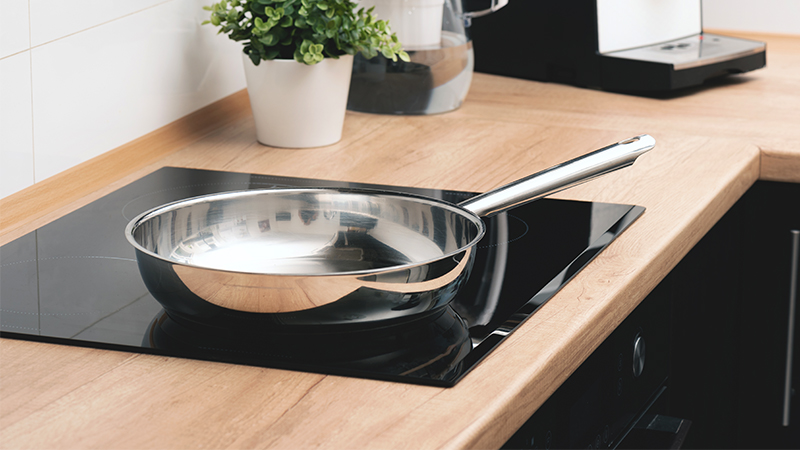
Unlike other hob types, it is the induction pan that heats up rather than the surface of the induction hob. This means that the surface of the hob will remain cool with only some residual heat that is transferred from the hot pan.
Induction hobs are extremely responsive and quick to heat and cook food. They are a good alternative to a gas cooker if you are not connected to the gas grid. Currently, that figure is around 14% of UK households.
For people who like to cook, a responsive hob is an absolute must. With a good induction pan set, you will get an instant reaction from your hob and cooking will be a pleasure, not a chore.
How Does an Induction Pan Work?
Typically, when buying pans for a gas or electric hob, you will be governed by your budget, your cooking needs and your personal taste. The size, style and colour of the pans are among the features that we use to choose new cookware safe in the knowledge that they will work successfully on our hob.
However, an induction pan is a very different beast, and it is important to know how it works to ensure that what you are buying is going to be effective on your induction hob.
Underneath the glass-ceramic surface of an induction hob is a coiled copper wire. An electric current is passed through this, which creates a magnetic current. When an induction pan is placed on the hob, the magnetic current produces heat and cooks the food in the pan.
It is important that the base of the pan is flat and is in direct contact with the surface of the induction hob. It is also necessary to have the right-sized pan on the correct ring of the induction hob for it to work properly.
Induction pans can be more expensive than regular cookware but are necessary if you have an induction hob. However, if you have a gas or electric hob, it is possible to use induction pans, but you will not gain anything by using them with a non-induction hob.
Depending on how the induction pans are made, repeated use on a gas or electric hob may cause damage in the long term and result in a less effective performance if you also want to use it on an induction hob. This is because some induction pans have a magnetic core embedded in the base and over time, it can become separated from the main body of the pan if used on direct heat hobs such as gas and electric. Induction pans which have an all over magnetic coating are not susceptible to this long term problem if used on non-induction hobs.
Types of Induction Pans
So now that we know that only induction pans will work on an induction hob, what types are available? Well, clearly, they either need to be made from iron or steel or incorporate a ferrous and, therefore, magnetic base.
Cast iron pans are guaranteed to work well on an induction hob as they are an excellent conductor for electro-magnetism. High-quality stainless steel induction pans also work well as they contain mostly iron with the addition of varying amounts of chromium depending on the grade of the stainless steel.
Glass, copper and ceramic on their own will not work on an induction hob, but with the addition of a ferrous base, it is possible to make them compatible.
We will look at each type of induction pan, from cast iron to ceramic, stainless steel to copper and discuss the pros and cons of each, including how they differ from one another.
Cast Iron Induction Pans
As a conductor, you can't get much better than a cast iron pan. This material is highly magnetic and works well with induction technology. It is also an excellent heat retainer and a very robust material capable of withstanding very high temperatures.
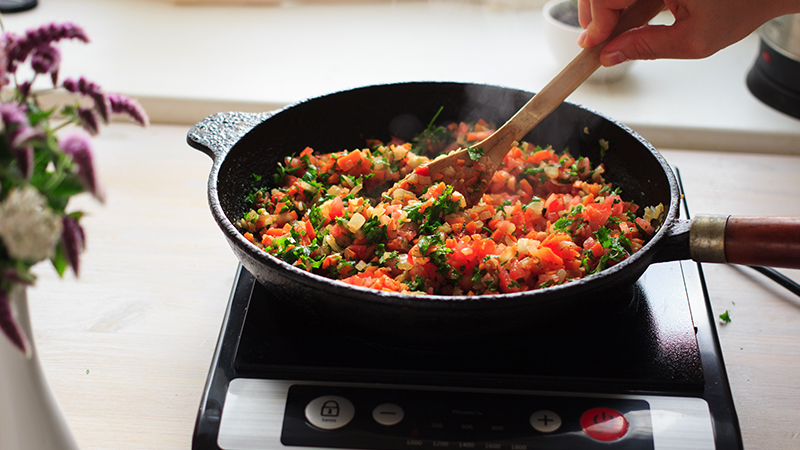
Unlike some other materials that induction pans can be made from, cast iron does not need any special treatment to work effectively on an induction hob. Stainless steel pans need to be made from high-grade steel in order to be conductive, while ceramic and copper all need specialised bases to work on an induction hob.
Cast iron pans are favoured by professional chefs for some dishes due to their durability and heat retention.
Stainless Steel Induction Pans
Stainless steel pans can be made from different grades of steel, and not all are suitable for an induction hob. Stainless steel is a mixture of iron, chromium and other elements, and the grade of the stainless steel is dictated by the level of these elements.
For a stainless steel pan to work on an induction hob, it needs to have a high level of iron and therefore be magnetic. To test this, place a magnet on the base of the pan, which is the part that will be in contact with the hob. If it sticks, then it will work on an induction hob.
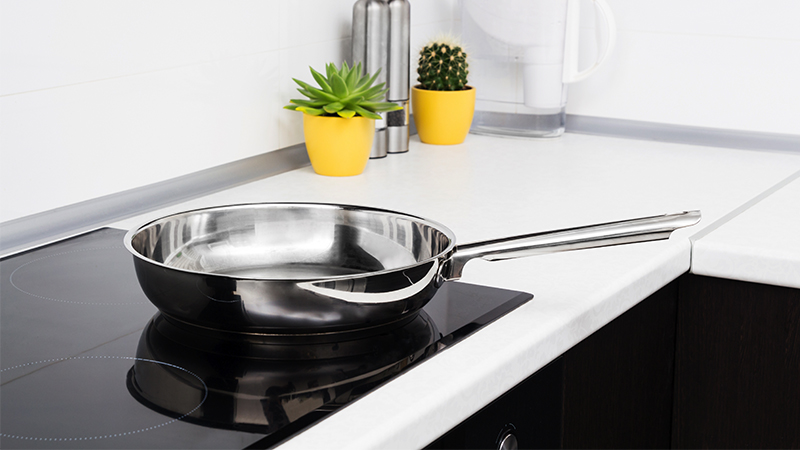
One of the main differences between a stainless steel induction pan from cast iron induction pans is the weight. Stainless steel pans are much lighter as they are an alloy of iron, chromium, nickel and other elements.
Stainless steel pans are widely used in both domestic kitchens and in restaurants.
Glass Induction Pans
Pans that are entirely made from glass, such as Pyrex or glass-ceramic, will not by themselves work on an induction hob as they are not magnetic.
Glass cookware can be used on an induction hob if you use a pan adapter or heat diffuser. This device is typically made from magnetic grade stainless steel and transfers the heat generated to the non-magnetic glass pans.
This is useful if you have a lot of glass cookware and you don't want to replace them all with ferromagnetic cookware.
Many induction pans also incorporate glass lids so that you can monitor the food while it is cooking. As induction hobs are very responsive, it is a good idea to be able to see into the pan while it is in use so that you can monitor and adjust the cooking temperature. For this reason, having induction pans with glass lids is ideal.
Copper Induction Pans
Copper pans need to have an induction-compatible plate in their base in order to work on an induction hob. This is because copper is not an electromagnetic metal. In fact, copper is the opposite; it is a diamagnetic material which means it is repelled by a magnetic field.
For this reason, a copper induction pan will most likely either have a very small amount of copper or just be copper coloured. Most will have a copper exterior, an aluminium core and a stainless-steel interior.
The difference between copper induction pans and other metal pans for use on an induction hob is the use of other metals such as aluminium and stainless steel. Pure copper pans can be used to make jam, syrup, chocolate etc. and are favoured by professional pastry chefs.
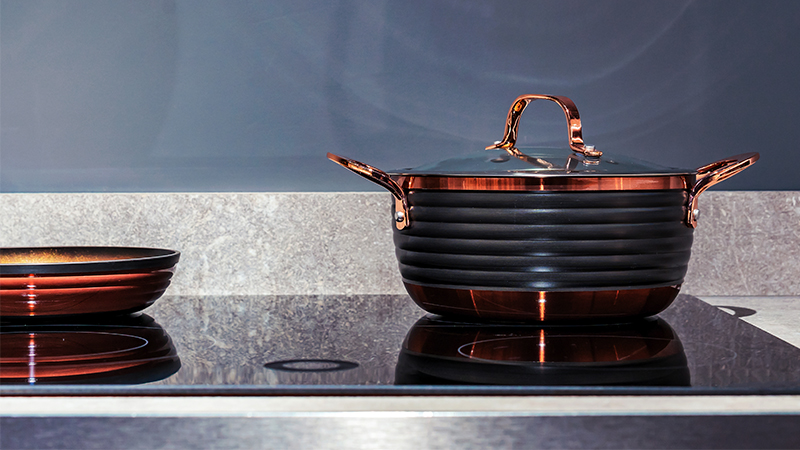
Other copper pans are coated with tin to prevent interaction between the copper and the food and can only be used on heat below 230°C. Above this temperature, the tin would melt.
However, the most common type of copper pan for domestic use is triply, and for an induction hob, the addition of the stainless steel base is crucial. Without it, the copper pan would not work on an induction cooker.
Ceramic Induction Pans
Ceramic on its own will not work on an induction hob, but many ceramic pans are fitted with a magnetic base making them induction compatible. Iron is often used, but magnetic grade stainless steel can also be used.
Some induction pans are ceramic coated aluminium, making them light, non-stick and safe to use on an induction hob.
Due to their non-stick nature, ceramic pans are popular with people who wish to avoid other non-stick induction pans due to health concerns regarding the coating on these pans.
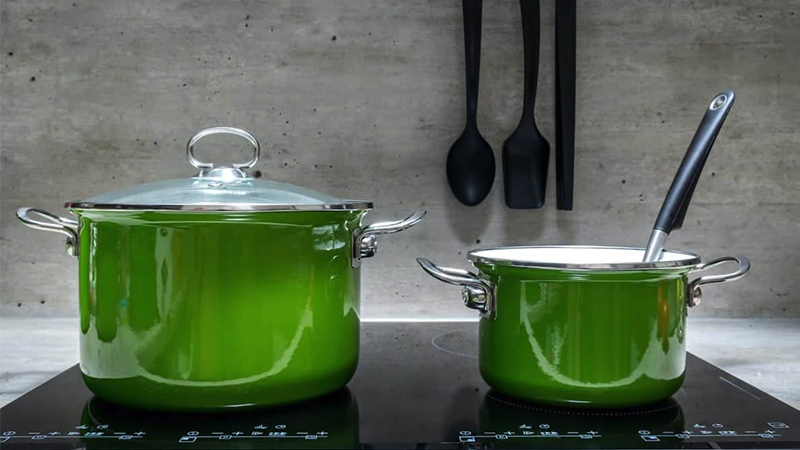
Ceramic induction pans, which are made from aluminium and ceramic coated, are quick to heat up and have good thermal retention.
Others are made from stainless steel, making them very compatible with an induction hob. Some ceramic coated induction pans are reinforced with diamonds or fused with titanium.
Induction Hob Pan
Induction hob pans come in a lot of different styles, sizes and materials like stainless steel, tri-ply and ceramic. Most induction hob pan sets offer a choice of three pan sizes ranging from around 14cm up to 18cm diameter.
Depending on the manufacturer and the material that they are made from, they can come with a 10 to 25-year guarantee. Most are dishwasher safe, and many can go from the induction hob straight into the oven.
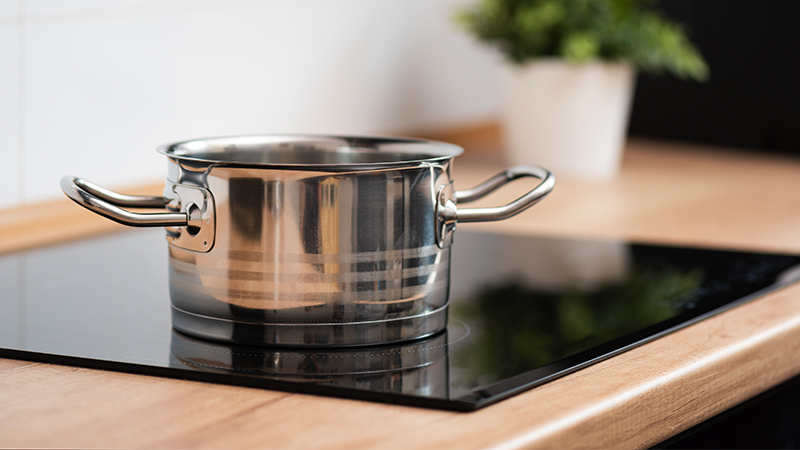
Although induction pan sets can be used on any other cooker, different pans may not be suitable for induction cooking. Testing whether a pan set is compatible with an induction hob is as simple as placing a magnet on the base of the pan; if it sticks, the pan is suitable for an induction hob.
Other pans can be made from a range of materials such as glass, copper and ceramic, which on their own cannot be used on an induction hob. Only after the addition of a ferromagnetic base can these pans be used on an induction cooker.
Induction Frying Pan
As with other induction pans, induction frying pans can be bought either individually or as a set of two or three offering various sizes and types such as sauté pans.
Some induction frying pans come with lids, although not all. Many induction frying pans can be transferred from the hob to the oven, but you should check this carefully in the product description.
In order to find the best induction frying pan, you should consider what your cooking needs will be before you purchase. While it may be tempting to buy based on budget or looks, if the induction frying pan does not meet your needs, then it is a wasted purchase. A small induction frying pan may be adequate for one or two-person households, while families may need something larger.
For some people, it is important that their frying pan has a non-stick coating, while others prioritise a more professional uncoated product for flavour and excellent heat distribution. If you like a stir fry, then a suitable induction compatible wok is a good investment, while sauté pans are a versatile addition to your cookware collection.
Induction Griddle Pan
Induction griddle pans are typically made from cast iron and have a ridged surface. They will normally have a long handle like a frying pan, and some also have a short ‘helper’ handle to aid with carrying or pouring.
Griddle pans are particularly good for cooking meat while draining away excess fat thanks to the raised ridges on the surface, which also leave sear marks on the meat similar to a barbeque. Most have one or two pouring lips to drain liquid and fat from the pan.
As many induction griddle pans are cast iron, they can be heated to high temperatures, and this produces smoke which can also flavour the food being cooked. They are tough and durable and can be used outside on your barbeque when the weather allows.
An induction griddle pan differs from a frying pan for induction hobs as they have raised ridges on the surface of the pan. A skillet is like a griddle pan but is smooth like an induction frying pan and with the same deep sides. However, skillets like griddle pans are normally made from cast iron.
For healthier frying, a griddle pan for induction hobs is a good option. The fats from foods such as meat and sausages are captured between the ridges on which the food rests, meaning that what you are cooking does not sit in the fat.
Best Induction Pans
With a vast array of induction pans to choose from, it can be difficult to narrow down your choices and find one that is best for you. So, we will look at some of the induction pans that are available, what they are used for and some of the pros and cons of each type of pan.
We will look at cast iron and stainless steel induction pans as well as what you can buy in the way of copper and ceramic induction cookware. We will also consider the merits of the different types of induction pans, such as frying pans and griddle pans.
Best Cast Iron Induction Pans
Some of the best induction pans are made from cast iron, but how do you choose which to buy? Some people prefer to stick with an established name, while others will base their decision on the budget.
Le Creuset
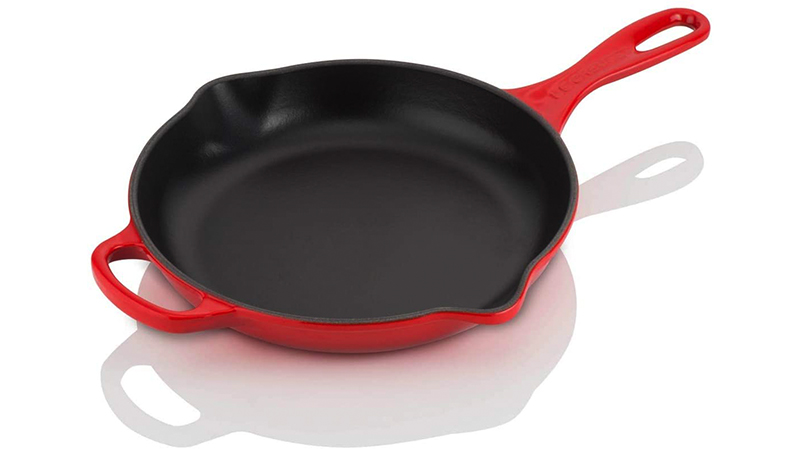
Le Creuset is probably the most famous cast iron cookware brand in the world and has been around for almost a hundred years. The quality of the Le Creuset collection of pans is reflected in the price, but once you buy one of these pans, it will last a lifetime.
These are incredibly versatile pans and can be used on your induction hob, in the oven or under the grill. Capable of withstanding temperatures up to 260 °C, Le Creuset pans are tough, durable and retain heat even when removed from the hob or oven. The enamelled cast iron interior of many of their pans means that cleaning is relatively easy.
Le Creuset cast iron pans for induction hobs can be used for a wide variety of dishes and cooking purposes such as frying, sauteing, roasting and boiling. The cast iron ensures even, all-round cooking for intense flavours and seals in moisture, ensuring food doesn't dry out.
Pros
- Lifetime guarantee
- Large range of pots, pans, casseroles, all of which are induction hob compatible.
- Freezer and dishwasher safe.
Cons
- Very heavy
- Extreme heat for prolonged periods of time cause damage to the enamelled coating
- Metal utensils cannot be used
Lodge
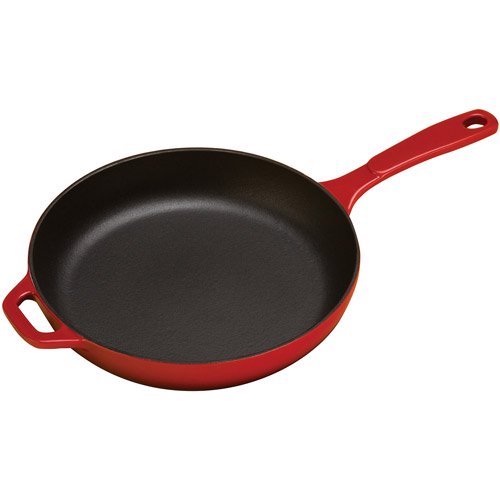
Lodge are an American made brand, but their pans are available in the UK through established cookware stores and online retailers. They make a range of pans, skillets and bakeware from cast iron and have been in business since 1896, even longer than Le Creuset.
The cast-iron pans made by Lodge are pre-seasoned, which means that they are coated in oil and then baked at a high temperature in a process called polymerisation.
This protects the pans from rusting and provides an easy release cooking surface. With good care and maintenance, these cast iron induction pans can last a lifetime. They also make enamelled cast iron which has a coating of porcelain enamel.
Lodge induction pans can be used for frying, griddling, boiling, stewing and even baking. As they hold heat and moisture, the full flavour of the food is retained and enhanced.
Pros
- Robust and durable
- Heat is distributed evenly
- Practical
Cons
- Extremely heavy
- Expensive
- Care should be taken when handling Lodge induction pans to prevent burns or scalds.
Staub
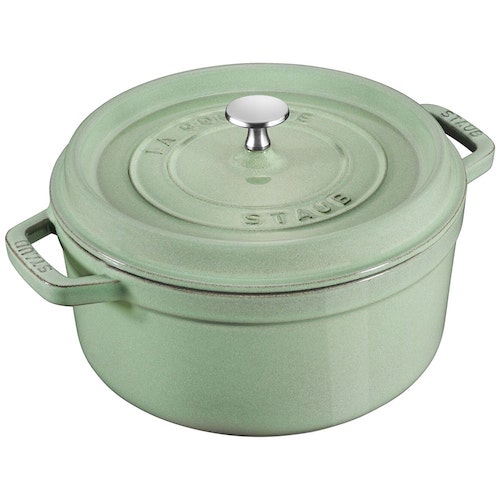
As with Le Creuset, Staub is a French manufacturer of cast iron cookware that is induction compatible. Staub has been established for more than 45 years and build on the tradition of French cuisine and world-famous chefs.
Staub cast iron pans to absorb and diffuse heat in a homogeneous way. They utilise a slightly rougher coating for the interior of the pans, which they have found improves the cooking process, especially for meats.
The casserole pans made by Staub feature raised bumps on the inside of the lid, which encourages condensation to form there, and it then falls evenly back onto the food.
This is what Staub call La Pluie d’Arômes or ‘aroma rain’, and it keeps the food moist and tender, preserving flavour and texture.
Pros
- Used in culinary competitions
- Each piece is unique, using traditional manufacturing methods and a high degree of quality control at every stage
- Highly resistant to thermal shock and scratching
Cons
- They are expensive
- Staub cookware is heavy
- Last a lifetime
Best Stainless Steel Induction Pans
There are a lot of stainless steel pans on the market, but not all stainless steel cookware is suitable for induction cooking. So rather than choosing for looks or budget, it is important to select induction compatible stainless steel pans.
Tefal
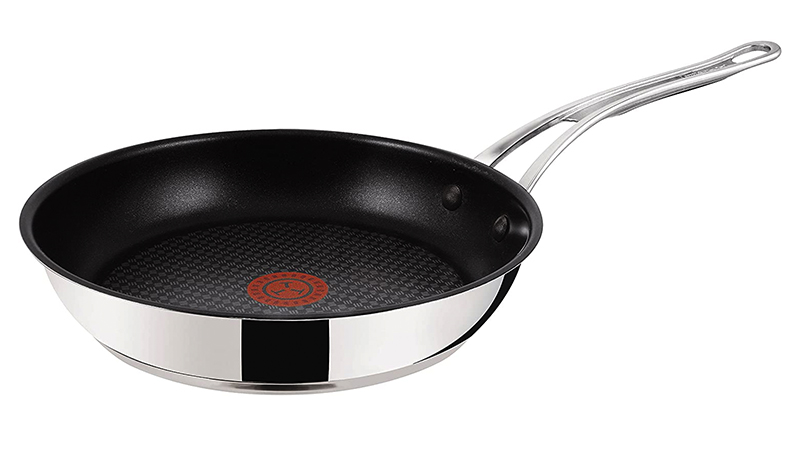
Tefal have specific stainless steel induction pan ranges, so you know that this cookware will work with your induction hob.
They are made from premium quality stainless steel with a specialist ferromagnetic base and ergonomic handles. The pans are offered with a 5 to 10-year guarantee depending on the range chosen.
The Tefal induction ranges have integral measurements on the interior of the pans, while the frying pans feature the Thermospot, which changes colour when the optimum frying temperature is reached.
Tefal induction pans can also be used on other types of hob such as gas and electric. They can be used from the hob to the oven, and the handles are oven proof up to 175°C for an hour.
Pros
- A well-known and respected brand
- Resistant to rust
- Energy-saving Thermospot technology
Cons
- The non-stick coating on Tefal's induction pans needs to be treated with care.
- Prolonged use of non-stick induction pans on high heat can result in the coating becoming damaged
- Some need to be washed by hand
Prestige
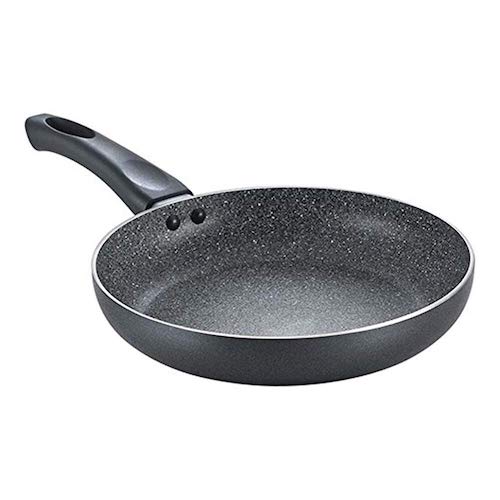
Prestige offers around five different stainless steel ranges that are compatible with induction hobs. You can choose from a set of three, four or five saucepans and frying pans, all of which come with a five-year guarantee.
The pans are made with high-grade stainless steel and feature an encapsulated base which means that a layer of aluminium is sandwiched between two layers of stainless steel. This ensures that a good connection is made with an induction hob.
Prestige stainless steel induction pans are tough and durable, making them a good purchase for everyday use. They are non-stick and give good thermal conductivity and even distribution of heat for cooking.
Pros
- These pans are robust enough to be used every day while also remaining stylish enough for any kitchen.
- Prestige induction pans will also work on other types of hob such as gas or electric, making them versatile as well as affordable.
- They are suitable for cleaning in the dishwasher.
Cons
- Only the milk pan and frying pan are non stick; the other pans in the set are not and need to be seasoned to prevent sticking.
- Some Prestige stainless steel induction pans are only oven safe up to 180°C.
- Stainless steel induction pans will not last as long as their cast iron equivalent.
ProCook
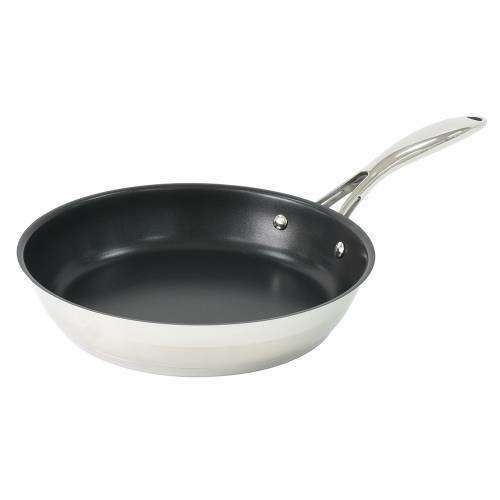
ProCook has many different ranges of stainless steel induction pans, from non-stick to uncoated cookware featuring a variety of sizes, styles and prices.
There is the Professional range, the Gourmet range and a selection of individual cookware pieces such as milk pans, frying pans and woks.
Both ranges are made with the highest grade, 18/10 stainless steel, but while the Professional range feature 7mm impact-bonded bases, the Gourmet range have bases of 4mm. Both have stay-cool handles which are safe in the oven up to 260°C.
All Prestige stainless steel induction pans are suitable for domestic use, but the Professional range can also be used in a commercial kitchen. Of course, they can also be used on other hob types such as gas and electric.
Pros
- Stylish and robust
- Most have a 10-25 year guarantee
- ProCook sells directly to the public, so the prices that you pay may be cheaper than if you were to purchase the pans through a third party such as a cookware shop
Cons
- If you live in a hard water area, you may still get marks from mineral deposits
- Quite heavy
- Some of the glass lids do not have steam venting holes and so tend to steam up
Best Copper Induction Pans
Jamie Oliver Tefal Tri-Ply Copper Induction Pans
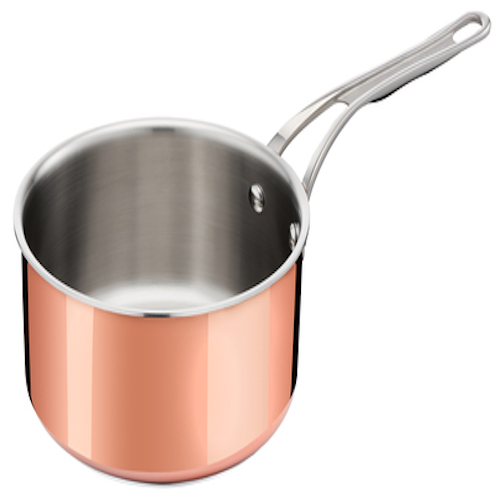
The Jamie Oliver range from Tefal features copper induction pans that are a triple layer of copper, aluminium and stainless steel.
The polished copper exterior looks stunning, while the stainless steel interior and aluminium core ensure that the pan is induction compatible. The base is impact-bonded, which means there should be no separation of the layers of different metals.
This range is a good everyday set of pans that offers rapid heating with even diffusion for excellent cooking results. The composition works very well with an induction hob making control of the cooking process precise and effective.
Pros
- Excellent thermal and ferromagnetic conductivity
- Very practical and can go from the hob to the oven
- Convenient pouring edges and glass lids
Cons
- Need to be washed by hand
- Relatively expensive
- Pans can be subject to thermal shock, which can result in distortion of the base.
Mauviel Copper Induction Pans
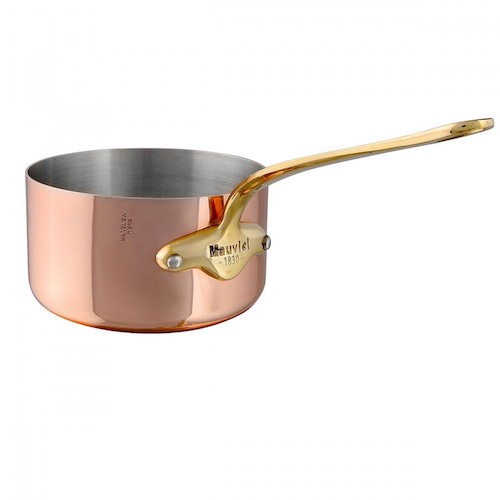
Mauviel is another French company that manufacture copper induction pans. This is hardly surprising given that arguably the best chefs in the world come from France and demand quality cookware. It doesn't get much more high quality than copper.
So, for using copper pans on an induction hob either in a restaurant kitchen or at home, Mauviel has brought out a range of pans that are compatible by adding layers of aluminium and stainless steel. This adds durability, heat responsiveness and perfect performance.
For those who are passionate about cooking and culinary excellence, Mauviel copper induction pans can be used for everyday cooking on an induction hob.
Pros
- Highest quality that you can buy
- Extremely responsive to changes in the temperature
- Have comfortable, stay-cool handles and flared rims which makes pouring from them easier
Cons
- Very costly
- Liable to small scratches and dents
- Pans should be washed by hand
Best Ceramic Induction Pans
Tower Ceramic Induction Pans
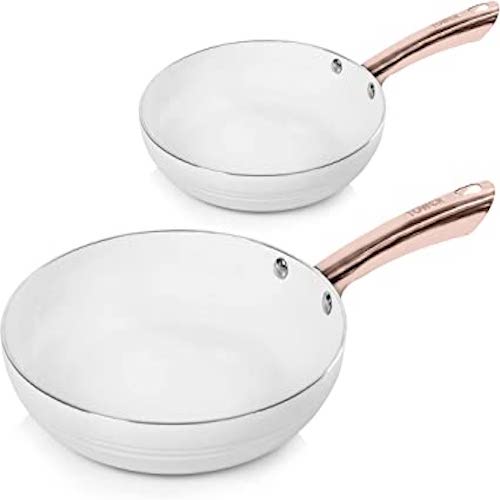
Tower has produced two ranges of ceramic induction compatible pans, the Cerasure and Cerastone ranges. Both are available in a set of five with three saucepans of varying sizes and two frying pans.
However, there is a size and quality difference between the two ranges. The Cerasure pans are smaller and made from pressed aluminium, while the larger Cerastone range is made from forged aluminium.
Both ranges, however, make excellent everyday use cookware and have the same five-year warranty. The Celestone may have the edge when it comes to durability due to the forging process it undergoes, but the Cerasure range is less expensive.
Pros
- Non stick
- Lightweight
- Have silicone hands that remain cool during cooking
Cons
- Cerastone pans cannot be used under the grill
- Recommend washing by hand
- Will not last as long as cast iron induction pans
Greenpan Ceramic Induction Pans
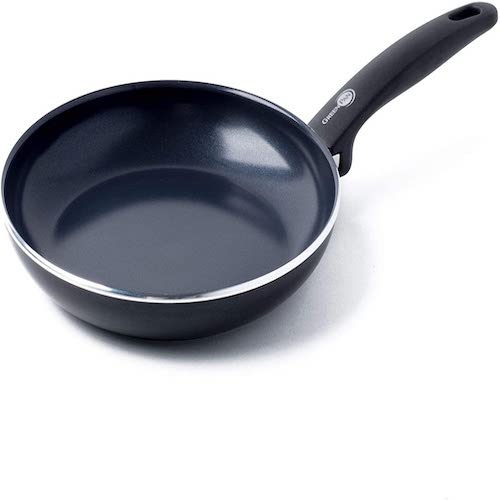
Greenspan produce ranges of non-stick pans that are coated with a ceramic-based substance that is free from chemicals such as PTFE and PFOA. The company manufacture the coating themselves and so can guarantee that their induction pans are free from harmful chemicals.
Greenspan's saucepan and frying pan sets are made from three layers of stainless steel with an aluminium core making then induction hob compatible. They are then sprayed with a ceramic coating that has been strengthened with diamonds to give a non-stick surface.
Pros
- A few collections of induction pans from everyday use, professional-grade, and a premiere range
- Ergonomic handles
- No toxic chemicals
Cons
- Expensive for a domestic kitchen
- Recommend to be washed by hand
- Gradual heating to protect the ceramic coating, which works differently from traditional non-stick surfaces
Best Induction Griddle Pans
Circulon Induction Griddle Pan
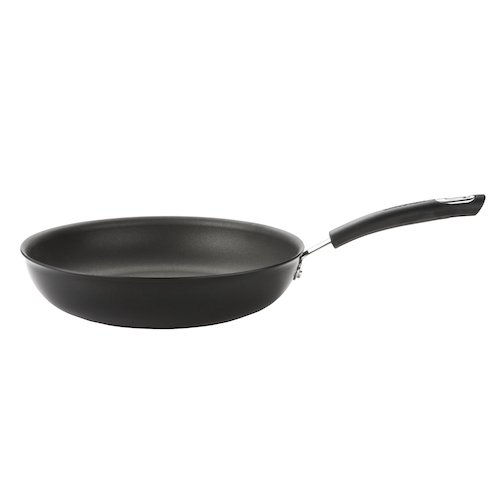
Circulon’s griddle pan is made from forged aluminium which makes it durable but also quite lightweight for a pan of this type especially compared to cast iron equivalents. It is, however, oven safe up to 260°.
The griddle pan has an edge to edge induction-compatible base, which is reinforced and provides even heat distribution. The rim is also reinforced, and the handle is fixed with flush rivets for a neat and hygienic finish. It is possible to use metal utensils with this pan, and it is dishwasher safe.
This is a good everyday induction griddle pan that can be used to sear steaks, griddle vegetables or fish in a healthy way. It requires minimal oil for cooking, and residual fat in the food can drain away.
Pros
- Come with a lifetime guarantee
- Can use metal utensils with the Circulon induction griddle pan as the non-stick coating is so durable
- Stainless steel handle attached with flush rivets means this induction pan can be transferred to the oven up to a temperature of 260° - They're also one of the lightest griddle pans available
Cons
- Not cheap
- Ridges on this induction griddle pan are not as deep and defined as some griddle pans - the charred grill lines on the food are not really achieved
- Not as substantial as some other pans
Tefal Induction Griddle Pan
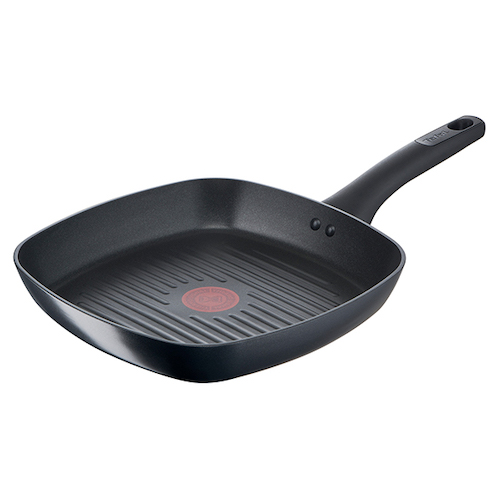
Tefal’s Expertise induction range includes a griddle pan which is coated with their Titanium Excellence finish designed to last more than 12 years.
This is a multi-layer non-stick coating and incorporates an extra thick base reinforced with titanium, and is capable of withstanding the use of metal utensils.
The induction griddle pan has specially shaped ridges designed to ensure that oil, fat or water is kept away from the food as it cooks. This results in crispy food with a charred grill appearance and smoky flavour.
Featuring Tefal’s signature Thermo-Spot the induction griddle pan will indicate when the correct temperature has been reached to cook your food. This takes a lot of the guesswork out of cooking and ensures good flavour, texture and colour.
Pros
- Non-stick coating is designed to withstand 12 years of use and is metal utensil compatible
- Stainless steel and Bakelite handles mean that the griddle pan can go straight from the induction hob to the oven up to a temperature of 175°
- Can be used on all hob types
Cons
- Still contains PTFE, according to their own website (this chemical has been linked to health concerns)
- Best washed by hand
- Ridges on the griddle pan are a little shallow and may not produce the charred grill lines
Le Creuset Induction Griddle Pan
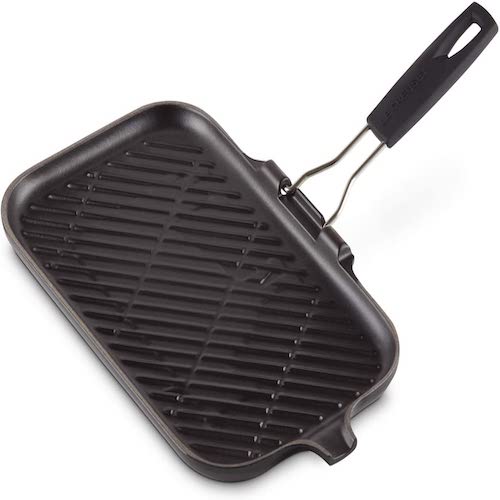
Le Creuset has a long-established reputation for making high-quality cookware, and their induction griddle pans are no different. They produce cast iron and aluminium induction griddle pans, both of which work well on an induction hob, and both come with a lifetime warranty.
For the dedicated Le Creuset consumer, only the cast iron griddle pan will do, and it is certainly a good investment. Over time the pan will become seasoned and will only improve with use. The ridges are deep and allow good separation of the food and the moisture in the pan.
The aluminium cast induction griddle pan from Le Creuset may be more practical for those who find lifting the cast iron pan difficult as aluminium is a much lighter metal. It has deep grilling grooves helping to achieve the charred grill look and smoky taste.
Pros
- Excellent non-stick properties
- Comes with a lifetime guarantee
- Excellent heat conductivity
Cons
- Very heavy
- Can cause damage to an induction hob if it is slid across the glass surface
- High heat could damage the non-stick surface of the pan
Best Induction Frying Pan
Tefal Induction Frying Pan
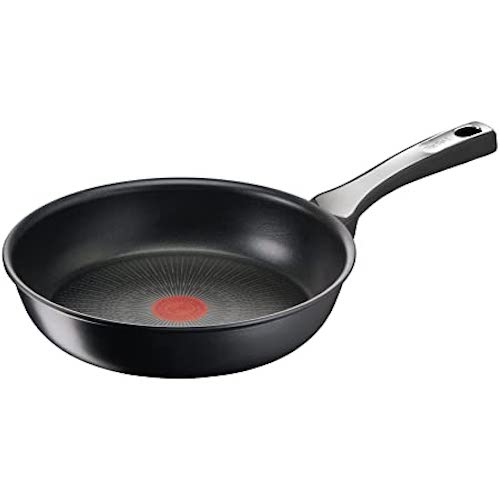
Tefal also makes an induction frying pan which features an indicator that shows when the pan is at the optimum temperature. This induction specific frying pan has a red spot that changes colour, becoming a solid red once the pan is between 140°C and 195°C.
Tefal are obviously known for their non-stick cookware and this stainless steel induction frying pan features an ultra-durable titanium enhanced coating, which lasts up to two times longer than their normal non-stick surface. This makes the Tefal induction frying pan an excellent everyday piece of kitchen equipment.
Pros
- Guaranteed for five years
- Faster cooking with the Thermo Signal technology
- Durable and resistant to damage
Cons
- Metal handle can get hot in use.
- Non-stick surface does not last as long as indicated
- Will scratch if stacked with other pans
ProCook Induction Frying Pan
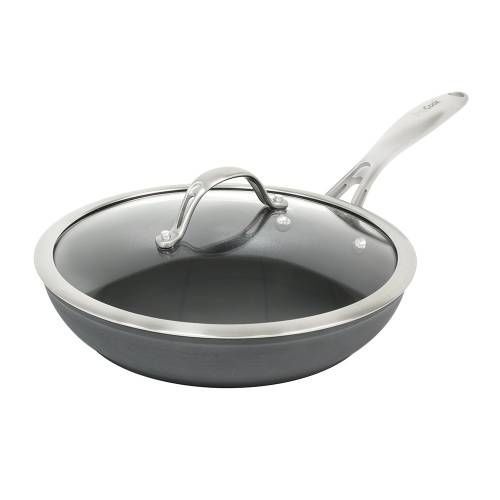
The Gourmet non-stick induction frying pan from ProCook comes in a range of sizes from 20cm to 28cm. It is important for use on an induction hob that the pan you are using is the correct size for the hob ring; otherwise, it will not work correctly.
The frying pan has a double non-stick layer and a silicone handle which means that it will stay cool, and you can transfer the pan from the hob to the oven. It is also dishwasher safe and makes a good everyday frying pan for your induction hob.
Pros
- A good everyday use induction frying pan at a reasonable price
- Ten-year guarantee
- Free from PFOAs
- Can be used in the oven up to a temperature of 260°C
Cons
- The handle on this pan too long, making it feel unbalanced
- Boost function can potentially damage the ProCook induction frying pans and should not be used
Best Induction Hob Pan
Le Creuset Cast Iron Induction Pans
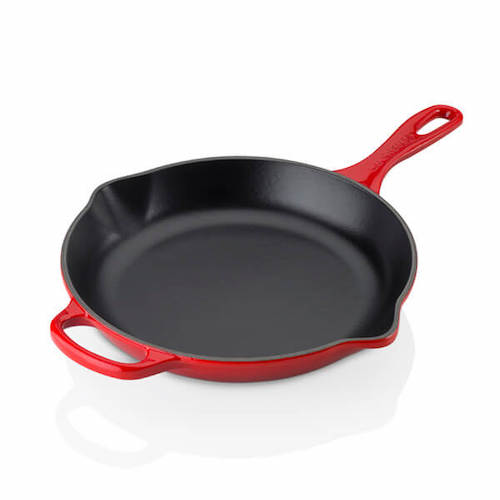
Le Creuset has been making cast iron pans for almost a hundred years, so the quality and reputation of these pans are well known.
Cast iron pans have excellent thermal and magnetic properties and, as such, work very well on an induction hob.
The durability and robustness of Le Creuset's cast-iron induction pans make them among the best that you can buy. Although expensive to purchase, it is likely that they will last a lifetime with the proper care and maintenance.
Pros
- Optimum thermal and ferromagnetic properties
- Last a lifetime
- Can be used on the induction hob and then transferred to the oven or under the grill
Cons
- Very heavy
- Expensive
- Should only be heated on low to medium heat
Tri-ply Induction Pans
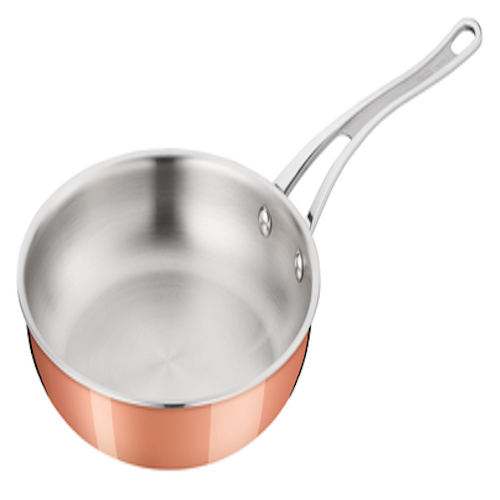
Tri-ply induction pans use the combined properties of stainless steel, aluminium and copper to produce and distribute heat evenly throughout the base of the pans.
The exterior is typically stainless steel with a core of aluminium and copper, although some like the Jamie Oliver collection from Tefal have a copper exterior, an aluminium core and a stainless steel interior.
These pans are designed to be durable, efficient and effective on an induction hob, and most of them look good. The tri-ply construction means they heat up quickly and are very responsive to the induction hob, and most are oven safe.
Pros
- Effective and durable cookware.
- Very robust
- Can transfer the pans from the induction hob to the oven
Cons
- Handles can become hot
- Ccan be more expensive than some other types
- Recommend washing them by hand
Best Non-stick Induction Pan
Tefal Expertise Non-Stick Induction Pan
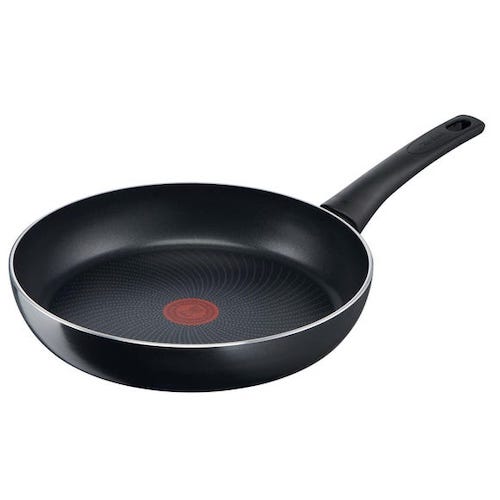
Tefal is a name long associated with non-stick cookware. The name is a combination of Teflon and aluminium, with Teflon being the brand name given to the chemical PTFE used as a non-stick coating.
Tefal produce several non-stick induction cookware ranges, one of which is infused with titanium. Tefal Expertise Induction pans which have the Titanium Excellence coating are guaranteed to last 12 years. They are an everyday use but very durable set of induction pans that are oven and dishwasher safe.
Pros
- Extra-thick base reinforced with titanium particles
- Possible to use metal utensils
- Can be used in the oven up to a temperature of 175°C
Cons
- Recommend washing them by hand
- The non-stick surface is still composed of PTFE
- Tefal do not recommend using high temperatures with their non-stick products
Prestige Eco Non-Stick Induction Pan
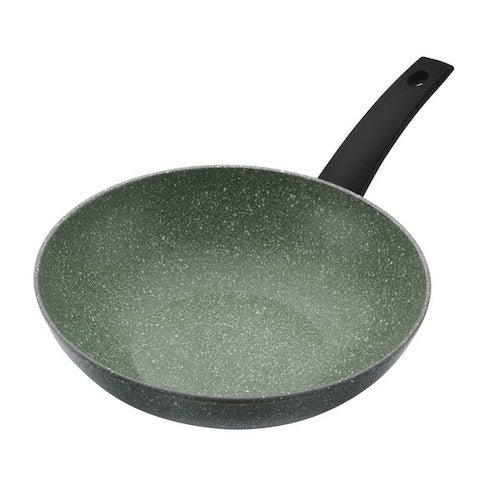
Prestige has produced a range of non-stick saucepans that use a plant-based coating as a non-stick surface. The Eco range is PFOA free, scratchproof and comes in a pleasant shade of green. The glass lids have steam vent holes and easy-grip lid handles, which feature a groove to rest utensils on.
The Eco pan claims to be the most environmentally friendly pan in the world and for every pan bought, a tree is planted. The company works with Tree Aid to help people in poverty and help the environment.
Prestige's Eco pans are an excellent everyday non-stick pan, and they come in a set of either three or five pans.
Pros
- Non-stick coating is made from a plant-based substance and contains no PFOAs
- For every pan purchased, a tree is planted as Prestige work with Tree Aid
- Made from recycled materials and are recyclable too.
Cons
- Slower at heating up than other induction pans
- Relatively expensive
- Quite small, ranging from 16cm to 24cm in the five pan set and 16cm to 20cm in the three pan set
ProCook Gourmet Non-Stick Induction Pan
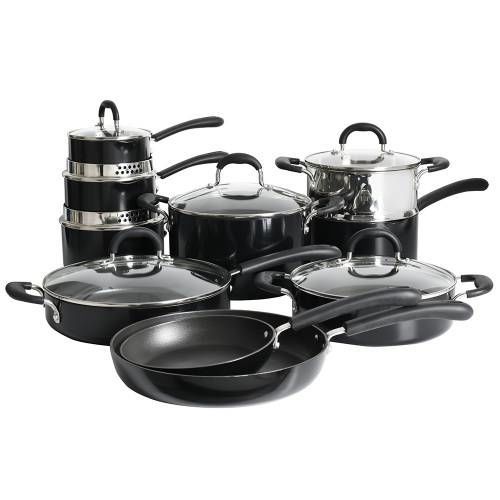
ProCook's non-stick Gourmet range of pans for induction hobs features a double layer of non-stick coating for extra durability. The pans themselves are made from 3.5mm aluminium with an induction-compatible base. The glass lids feature a strain and pour feature with safe draining from either side of the pans.
The Gourmet non-stick range is suitable for use in the oven up to temperatures of 260°C and can also be cleaned in the dishwasher.
The stay-cool handles are made from silicone and are riveted in place. A good everyday non-stick induction compatible set of pans that come with a ten year guarantee.
Pros
- Made without PFOAs
- Ten-year guarantee
- Easy and safe draining of water
Cons
- Handles on the glass lids get hot
- Pan sizes are relatively small
- Not advisable to use the boost
Best Small Induction Pan
Circulon Hard Anodized Milk Pan
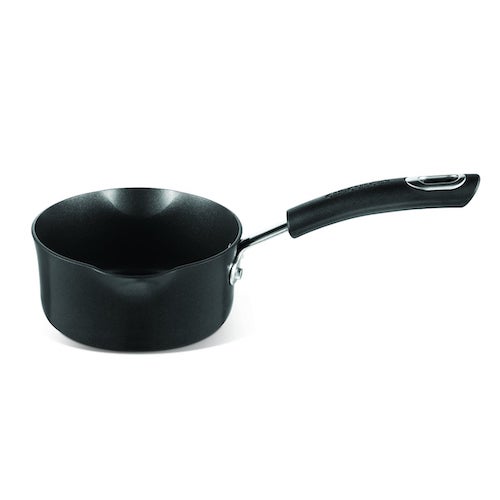
This 14cm milk pan from Circulon is made from aluminium that has been oxidised and hardened to form a non-stick surface.
The induction-compatible base goes from edge to edge, ensuring that contact is always maintained between the hob surface and the pan. It can be cleaned in the dishwasher and comes with a lifetime guarantee.
Of course, you can use the Circulon hard-anodised milk pan for more than just milk or sauces. You could use it to boil eggs, heat soup or make a custard. The toughened surface means you can even use your metal utensils with this pan.
Pros
- Very durable
- Lifetime guarantee
- No associated buzz when cooking
Cons
- Pan is quite small
- Quite expensive for the size of the pan
- Doesn't have a pouring lip
Le Creuset Toughened Non-Stick Milk Pan
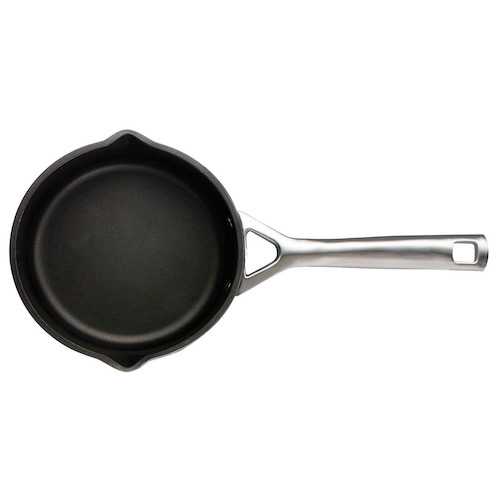
Le Creuset have included two pouring spouts on their toughened milk pan which makes it easy to use for left or right-handed people. The pan is made from hard-anodised aluminium making it extremely tough and durable but also light enough to be used as an everyday pan.
The non-stick coating is one of Le Creuset's best and has been independently tested against metal utensil usage and is PFOA free. The surface coating makes it very easy to clean, but it is also dishwasher safe.
Le Creuset’s non stick milk pan can be used to warm milk, make sauces or custard or cooking eggs.
Pros
- Even and efficient heat distribution throughout
- Metal utensil resistant
- Lifetime guarantee
Cons
- Very expensive pan
- For a milk pan it is quite large
- The pan's interior needs to be conditioned before use b
Prestige Stainless Steel Milk Pan
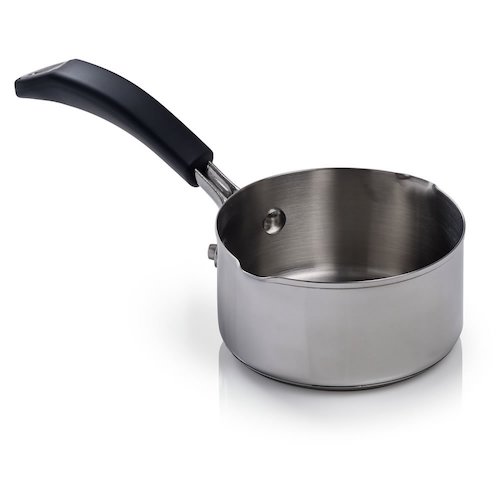
As part of their Cook & Strain range Prestige have produced a stainless steel milk pan. Like the Le Creuset, it features two pouring spouts for left or right-handed use and a non-stick interior for ease of cleaning. The pan is 14cm in diameter and has a capacity of 0.9 litres.
The durable stainless steel allows even heat distribution for efficient cooking and the pan is oven safe up to 180°. It is dishwasher safe and comes with a five year guarantee.
Pros
- Efficient and even heat distribution
- Not expensive
- Two pouring spouts
Cons
- Holds less than a litre of liquid
- Harsh or abrasive dishwasher detergents can damage the interior
What to Consider Before Buying an Induction Pan
Before you spend money on new pans for your induction hob, there are a few things that you need to consider. Apart from the important consideration of ensuring that the pans you buy will be induction compatible, there are other criteria to think about, such as budget, size, the type of cooking you typically do and ease of use.
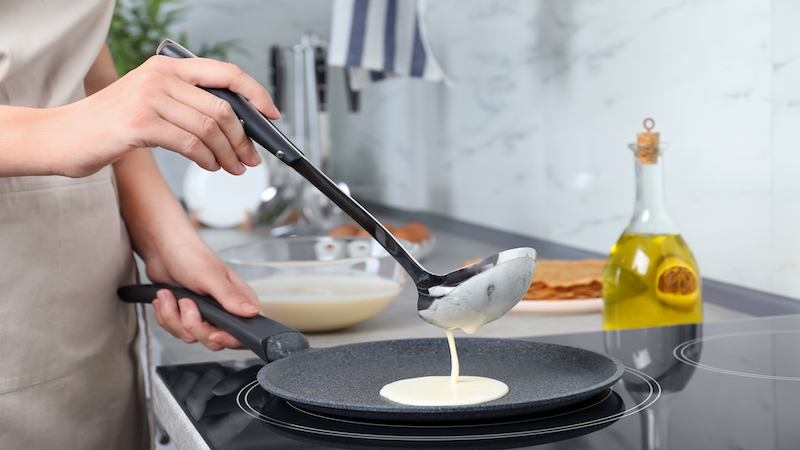
Cost
The amount that you pay for your induction pans will depend on several things such as the type of material the pants are made from, the manufacturer and the budget limit that you set yourself. If you cook a lot and are passionate about it, you may consider induction pans as an investment and pay hundreds for a quality set.
However, if you just want a pan that will work efficiently on your hob for everyday meal preparation, then you can find good quality induction pans at reasonable prices.
Size
Induction pans, like other cookware, come in many different sizes, shapes and dimensions, so you should choose the right size for your cooking needs.
It is also very important to ensure that the pans you buy are the same size as the rings on your induction hob, as this is vital to the effectiveness of induction pans. The entire surface of the pan base should be in contact with the induction hob to work properly.
What Type of Cooking?
For those who do a lot of cooking for pleasure or even as a business investing in good quality induction pans makes sense. With the right cookware, you will get consistent results and be confident in the ability of the pans to do what you need them to do.
On the other hand, if you cook only for yourself or your family, you may simply need induction pans that are reliable and durable.
Ease of Use
Any cookware that you buy should make your task in the kitchen easier, and this also applies to induction pans. For example, while cast-iron makes excellent induction pans, they are by their nature very heavy, and some people may struggle to manipulate them.
They can also cause scratches on your induction hob if they are slid across the surface rather than lifted.
You also want to clean and maintain the induction pans easily, so this is another consideration when buying.
For example, copper induction pans look beautiful but over time they will take on a patina which you may not be happy with if you bought them for their looks.
FAQs
What happens if you use a normal pan on an induction hob?
If you attempt to use a non-compatible pan on an induction hob, it simply will not work or heat up and may make a pulsing noise.
How do you check if a pan is induction hob friendly?
You can check if a pan is an induction compatible by placing a magnet on the base. If the magnet sticks strongly then the pan will work effectively on an induction hob.
However, if the magnet sticks but not very well, the pan may work but take longer to heat up. If the magnet does not stick, the pan is not induction compatible.
What is the best material for induction pans to be made from?
Cast iron and high-grade stainless steel are the best materials for induction pans due to their high ferrous content. This makes them highly magnetic and when they interact with the electrical current from the induction stove, the pan starts to heat up.
Can induction pans be used on other hobs?
Induction pans can be used on most other hobs but not all cookware can be used on induction hobs. Most labelling on pans will indicate the type of hobs they are compatible with, so you need to check this before buying.
What if I don't have induction-compatible pans?
You can use a diffuser on an induction hob, making it possible to use non-induction pans such as those made from glass.
A diffuser is just a disc made from magnetic material and typically with a handle attached, and the diffuser creates the magnetic field necessary to heat the pan.
Sources
- https://www.cda.eu/hobs/how-does-induction-cooking-work/
- https://www.cookersandovens.co.uk/blog/what-is-induction/
- https://www.bosch-home.co.uk/bosch-innovations/cooking-with-induction
- https://inductioncookingfacts.com/can-you-use-stainless-steel-cookware-on-an-induction-range/
- https://circulon.uk.com/collections/circulon-ranges-ultimum/
- https://www.tefal.co.uk/pots-and-pans/griddle-pan

